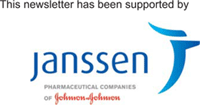|
 |
| Johnson NE et al, Neuromuscul Disord. 2015 Aug;25(8):625-31. |
| This is a retrospective medical record review of dermatomyositis patients at four medical centers. All patients were over the age of 21 and had a clinical diagnosis of dermatomyositis with pathological confirmation. The authors reviewed average muscle strength, corticosteroid use, creatine kinase levels, and supplemental immunosuppressant use during the 36-month period following each patient's initial assessment. One hundred patients participated with an average age of 50.1 years. Average muscle strength improved and prednisone requirements lessened six months after the initial assessment. There was no difference in the mean change in muscle strength or cumulative corticosteroid use over 36 months among those initially treated with methotrexate, mycophenolate mofetil, pulse IVIG, or azathioprine. There was a 5% mortality rate among the dermatomyositis patients due to infections. Treated dermatomyositis patients demonstrated the most significant improvement in strength during the first six-to-twelve months following their initial clinical assessment. |
 |
|
 |
| Cantini F et al, Autoimmun Rev. 2015 Jun; 14(6):503-9. |
| A multidisciplinary expert panel, the Italian multidisciplinary task force for screening of tuberculosis before and during biologic therapy (SAFEBIO), was constituted, and through a review of the literature, an evidence-based guidance for latent tuberculosis infection (LTBI) detection, identification of the individualized level of risk of TB reactivation, and practical management of patients with TB occurrence was formulated. The literature review confirmed a higher TB risk to be associated with monoclonal anti-TNF agents, a low risk for soluble receptor etanercept, and a low or absent risk for non-anti-TNF targeted biologics. Considering the TB reactivation risk associated with host demographic and clinical features, and previous or current non-biologic therapies, a low, intermediate, or high TB reactivation risk in the single patient was identified, thus driving the safest biologic choice. |
 |
|
 |
| Mandl P et al, Ann Rheum Dis. 2015 Jul; 74(7):1327-1339. |
| At present, growing scientific evidence from medical literature and expert opinion provide strong consideration for a mandatory role of glucocorticoids (GCs) in the management of rheumatoid arthritis (RA). Earlier, application strategies were based on initial high doses, with subsequent tapering schedules, resulting in dose-related side effects. Recent low-dose GC schemes are more feasible in routine care, while providing evidence of clinical, functional and structural efficacy. Thus, initial low-dose GC 'bridging' treatment on a disease-modifying antirheumatic drug background should be included in any existing recommendations for RA management, as very recently advocated by the EULAR Task Force 2013 updated guidelines. Long-term low-dose therapy appears to provide acceptable safety, leading to long-standing slowing of structural damage, seen even after GC therapy withdrawal. |
 |
|
 |
| Fransen M et al, Cochrane Database Syst Rev. 2015 Jan 9; 1:CD004376. |
This review was aimed to determine whether land-based therapeutic exercise is beneficial for people with knee OA in terms of reduced joint pain or improved physical function and quality of life.
High-quality evidence indicates that land-based therapeutic exercise provides short-term benefit that is sustained for at least two to six months after cessation of formal treatment in terms of reduced knee pain, whereas moderate-quality evidence revealed improvement in physical function among people with knee OA. The magnitude of the treatment effect would be considered moderate (immediate) to small (two to six months) but comparable with estimates reported for non-steroidal anti-inflammatory drugs.
|
 |
|
 |
| Mandl P et al, Ann Rheum Dis. 2015 Jul; 74(7):1327-1339. |
| Imaging is a key modality in the diagnosis and management of SpA. Based on a systematic review of literature, EULAR has developed 10 recommendations for the use of imaging in the diagnosis and management of SpA. The key recommendations emphasize plain x-rays of SI joints for diagnosis of AxSpA and MRI of SI joints if x-rays are negative in the face of strong clinical suspicion especially in early disease. X-rays may also be useful in the monitoring of structural damage in AS as well as in peripheral SpA. Imaging modalities, other than conventional radiography and MRI, are generally not recommended in the diagnosis of axial SpA. These recommendations however need to be tailored for implementation in different geographic locales. |
 |
|
 |
| Ungprasert P et al, ClinExpRheumatol. 2015 Jun 19. |
| Thromboembolic phenomena are one of the causes for morbidities and mortalities in rheumatic diseases. In RA and lupus, there is adequate data to support this. In this metaanalysis, the authors have looked at the occurrence of thromboembolic phenomena in patients with Sjogren’s syndrome and have found an increased risk of venous thromboembolism in these patients as well. Whether it is uncontrolled disease activity and inflammation leading to this or there are genetic acquired factors like phospholipids or factor V laden would need to be looked into. |
 |
|
|
 |
|
 |
|
